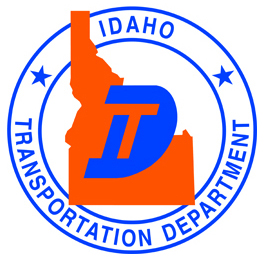
Funding, safety, emerging leaders highlight March board meeting
Funding levels, employee safety goals, aligning work goals with the overall department mission, and discussion of an emerging leaders program was highlighted in the March Idaho Transportation Board meeting in Boise.
The board met at ITD Headquarters on March 15 and 16. At the workshop on March 15, staff discussed various topics such as the response to the severe winter and its impact on operations and preparing projects for advertisement.
Staff also proposed funding levels for the FY22 Idaho Transportation Improvement Program. The recommendation is to continue focusing on pavements, bridges, and the Strategic Initiatives Program (SIP). The SIP emphasizes safety, mobility, and economic opportunity.
Currently, 85 percent of the department’s pavement is in good or fair condition, exceeding the goal of 80 percent. Seventy-five percent of the bridges are in good condition, which is just below the goal. About 740 more lane miles need to be improved every year to maintain the current metric of 86 percent in good or fair condition. Without that, the number of lane miles in good or fair condition is expected to decrease to 80 percent in six or seven years. Highway fatalities have been increasing, with 252 fatalities in 2016 compared to 216 in 2015 and 186 in 2014. The number of serious injuries has also increased.
The board concurred with the proposed funding levels of $104 million for pavement, $80 million for bridges, and $80 million for the Strategic Initiatives Program in FY22. More funding is being proposed for the SIP to address safety.
Internal Review Report
The annual report from the Office of Internal Review was presented to the board at its business meeting on March 16.
During 2016, the three auditors conducted 85 external assignments. A review of overhead rates resulted in a three-percent reduction on $52.3 million in contracts, for a $573,000 savings to ITD. Some internal assignments included an update of the Annual Internal Control Assessment Attestation to the State Controller, assistance to the Civil Rights Office, final voucher assistance to the Financial Services Section, and a District Records Inspector process review.
The 2017 work plan includes reviewing 60-80 overhead rates, continuing internal control consulting on the Division of Motor Vehicles’ modernization system, reviewing motor-vehicle-investigator processes, and assisting the Accounts Payable Process Improvement Team. The office is shifting its focus to enterprise risk management. This will involve addressing findings and risks as they are identified, providing assistance by researching problem areas, utilizing problem-solving methods, and educating staff on risks and consequences of weak internal controls.
Human Resources’ Annual Report
The annual report from Human Resources was also on the agenda.
The employee safety goals are to reduce the injury rate by 10 percent, reduce the vehicle accident rate by 10 percent, and reduce the tort claim costs by 10 percent by calendar year 2020. Preventable accidents have decreased the past few years — in FY16, there were 85 preventable accidents, compared to 103 in FY15. The Wellness Program continues to provide activities and information to increase productivity and morale by decreasing absenteeism and improving healthcare.
The Civil Rights Office secured $190,000 in discretionary funding for a heavy equipment operator school, which will target veterans. Human Resources Services worked on the performance management model to improve the ability for employees to align their work with ITD’s strategic initiatives. It reported that the number of positions advertised increased 28 percent from 2015 to 2016 while the number of applicants increased 53 percent.
The Training Section continued delivering the Western Association of State Highway and Transportation Officials’ Emerging Leaders Program. It is working on implementing a similar program within ITD.
Published 03-24-17